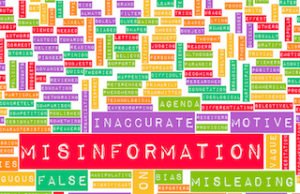If your marketing brochure claimed you were the best financial advisor in America, few people would believe you, since there’s no practical way to compare all advisors to determine the single greatest one. In fact, the U.S. Federal Trade Commission (FTC) has said advertising puffery does not warrant enforcement action because it’s so ludicrous as to be unbelievable by any reasonable person.
Regardless, the National Ethics Association recommends avoiding exaggerated statements for several reasons:
• First, there will always be someone who takes them seriously, particularly those with cognitive impairments.
• Second, making inflated claims sets unrealistic client expectations, which can come back to haunt you later in the form of complaints and errors-and-omissions insurance claims.
• Third, securities, investment-advisor, and insurance regulators take a dim view of unsupported statements of any kind. Getting disciplined for making one can take a toll on your business reputation, especially since the Internet now has a permanent memory for business mistakes.
For these reasons, advisors should simply refrain from exaggerated claims. They come in two different forms: oral statements and written ones, and both can occur during the sales process and afterwards. Two practices that can lead to exaggerated written language include plagiarism and the use of professional ghostwriters. The remainder of this article will focus on these two issues.
Most advisors are familiar with plagiarism from their high school and college days. According to plagiarism.org, stealing and passing off the ideas or words of others as your own can lead to puffery in print. That’s because inflated claims may lead someone to conclude you have more knowledge about a subject than you actually do.
Interestingly, plagiarism comes in several different flavors. Plagiarism.org lists 10 separate types, including the following five:
- Pure clone: stealing someone else’s content, word for word, from beginning to end.
- Ctrl-c: copying significant portions of a work, but not all of it, without proper citations.
- Find and replace: hiding the plagiarism by changing key words and phrases, but stealing all the key ideas.
- Remixing: grabbing content from multiple sources, then moving words around to cover your tracks.
- Hybrid plagiarizing: combining perfectly cited sources with copied content without citations.
Whatever the plagiarism type, it’s a risky practice that can derail your professional reputation. Plagiarists are often viewed as being intellectually dishonest, lazy, without scruples, and committed to career advancement at any cost. Trust us… you don’t want prospects and clients to think of you in these terms. If you don’t trust us, ask historian and writer Stephen Ambrose, New York Times columnist Maureen Dowd, a reporter from the same newspaper, Jayson Blair, and U.S. Senator John Walsh. All were involved in high-profile plagiarism scandals, and all suffered serious reputation damage.
How to avoid plagiarism? First, plan your writing task before you actually start writing. Plot out the key points you want to make, making sure that the majority come from your own knowledge and experience. Then fill in the gaps by finding credible third-party sources. For each piece of outside information, jot down the necessary citation data so you’ll have it later.
Then, as you write your content, credit all third-party content as soon as you insert it into your text. If you don’t do this right away, you may forget to do so later. If you’re not sure where the content came from, double back to your research notes to uncover the author. If you can’t find the person, then find an alternative source.
Finally, don’t hesitate to cite information from credible experts. Some people think that citing a lot of sources weakens your credibility as an expert. Actually, just the opposite is true. The more sources you site (within reason), the more you’ll come across as a serious expert and writer. In the financial-advisory business, where perception is often reality, being viewed as an ethical advisor with strong research and writing skills, will always be a great asset.
And now we come to the practice of ghostwriting. About 10 years ago, there was a boom in financial advisors hiring professional writers to pen articles and books for them. Advisors typically didn’t write the material themselves, but often took full credit for it. This was an ethically dubious practice, but it persisted because it was perceived to be an effective business-development tool.
Eventually, so many advisors began doing this that regulators and industry associations got involved. In issuing its Regulatory Notice 08-27, “Misleading Communications about Expertise,” FINRA explained that it was “concerned that some registered representatives were misrepresenting their investment acumen by using ghostwritten communications that mislead investors.” Building on its prior Rule 2210 prohibiting false, misleading, or exaggerated public communications, FINRA’s 08-27 notice prohibited representatives from suggesting (or encouraging others to suggest) that they wrote investment related books and articles when, in fact, they did not. FINRA also required advisors to disclose the names of their ghostwriters.
The CFA Institute, which grants the Chartered Financial Analyst designation, shared FINRA’s concerns about plagiarism in the financial-services industry, especially in the analyst realm. Under its ethical standard I-C, Misrepresentation, CFA prohibited financial analysts from:
• Putting their name on another analyst’s research report.
• Including a large portion of another analyst’s report in his or her own work without giving credit.
• Failing to fully cite an expert quoted in a report. For instance, just saying “a top analyst in the field says” would be in violation of the I-C standard.
Fast forward to 2015. When vendors create content for advisors today, they typically identify themselves as authors. However, if the advisor plays a significant role in content development—say, sitting for an interview with the writer and sharing technical knowledge—a shared byline is an acceptable practice. Full disclosure in this regard has hopefully reduced disconnects between public perceptions of advisor expertise and the advisor’s actual expertise, thereby reducing complaints and errors-and-omissions insurance claims.
The bottom line is this: When it comes to writing or purchasing content, truth is the watchword. If you’re writing a blog post or trade publication article and use someone else’s ideas in your material, give credit where credit is due. If you commission an article or book from a communications firm or freelance writer, give that firm or person full or partial writing credit, depending on the degree of your involvement. These practices will not only keep you out of hot water, they will enhance your professional reputation, as well. Sounds like a win-win to us!
Harry J. Lew is Chief Content Officer at EOforLess.com. For more information on affordable errors and omissions insurance for low-risk financial advisors, visit E&OforLess.com. For information on ethical sales practices, please visit the National Ethics Association’sEthics Center.













